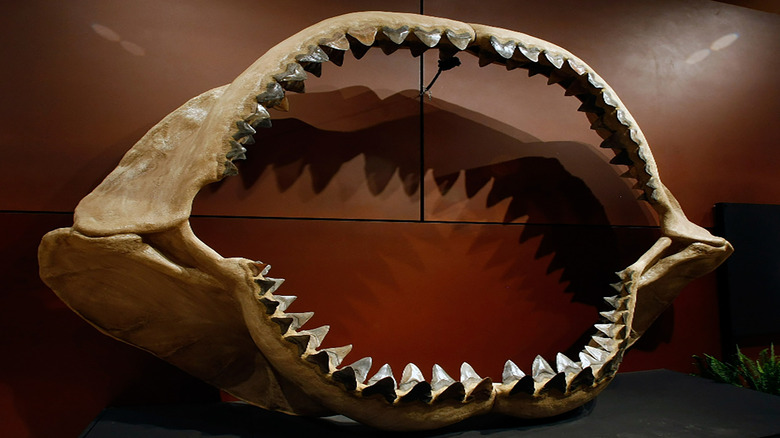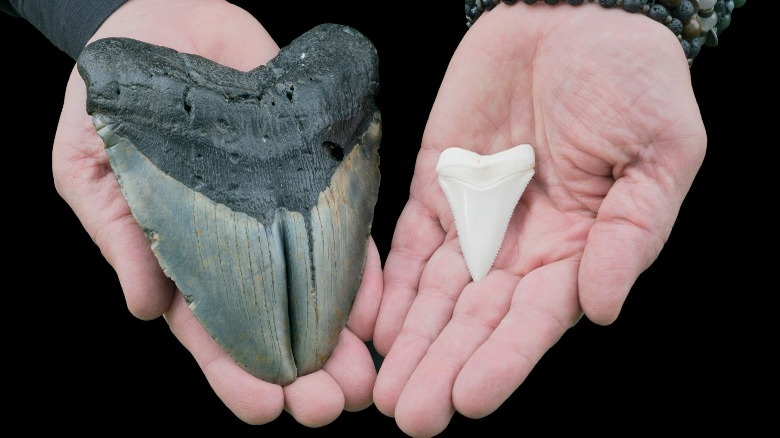Where Did Megalodon Sharks Live And What Did They Eat?
The carcharocles megalodon shark was a giant prehistoric shark that existed 20 million years ago and was the dominant sea creature for 13 million years until it became extinct 3.6 million years ago (via the Natural History Museum). It stuck around long after the dinosaurs went into extinction during the Ice Age. Not a lot is known about this massive creature, but scientists estimated it measured between 45 to 60 feet, with an average weight between 50-100 tons. To put this into perspective, megalodons were four times the size of a great white shark, or as big as a school bus, and the Tyrannosaurus Rex averaged nine tons (via Bright Side).
Megalodon means "big tooth." Fossilized teeth have been found in the deserts of Africa, on Sharktooth Hill in Bakersfield, California, and on every continent except Antarctica. They lived and traveled in the north and south Atlantic and Pacific oceans. The largest tooth was found in Peru. It measured 7.5 inches, but most of the teeth that have been found have measured between 4-7 inches. The megalodon had 276 serrated teeth placed in five rows, and when one broke off from chomping on the bones of its prey, another grew in its place. In fact, one tooth can be replaced up to 50 times and their forceful bite generated up to 40,000 pounds (via Bright Side). The megalodon had a massive appetite and needed 2,500 pounds of food daily. It ate sharks, sea cows, seals, dolphins — any marine life that got in its way — but its favorite snack was the whale.
Carcharocles Megalodon tooth versus Great White shark tooth
Why did they go extinct? Initially, scientists believed a supernova exploded 150 light years from earth and the radiation changed the climate in a way that made it impossible for some marine life to survive. But in 2019, researchers found fossils that dated back to an earlier time, so the supernova theory was out (via Bright Side). Another theory was the megalodon preferred warmer temperatures, between 53-80 degrees, and they weren't as quick to adapt to colder temperatures as did their food sources. However, megalodon teeth have been found in waters as cold as 33 degrees Fahrenheit, so it seems they also may have been mesothermic — they could generate enough body heat to keep their blood warmer than their environment, without maintaining a consistent body temperature, says Live Science.
The prevailing theory is that they starved due to increased competition and decreasing food sources. The younger megalodons weren't capable of hunting for food on their own and became food for their bigger rivals. The mako, great white shark, and the tiger shark were faster than the megalodon and could dodge them. The rhamphosuchus, a prehistoric crocodile, and the leviathan whale rivaled the megalodon in size and weight, and they all fought over food and turf. According to another posting by Live Science, there are many theories. Maybe the megalodon became extinct due to a combination of the inability to adapt to climate change and the inability to find adequate food sources.
Shark Week airs July 11-18 on Discovery and discovery+.

